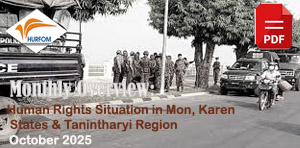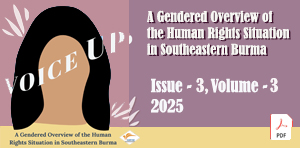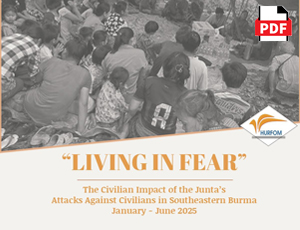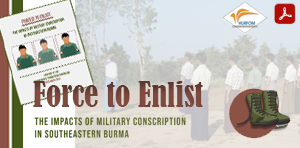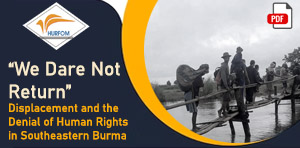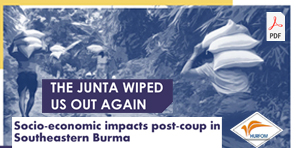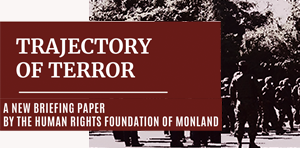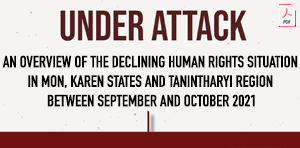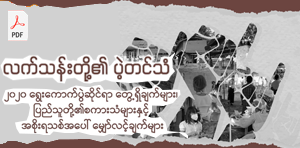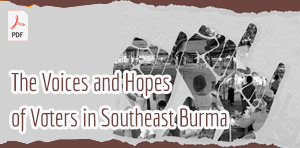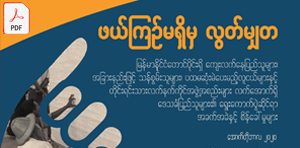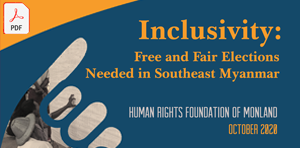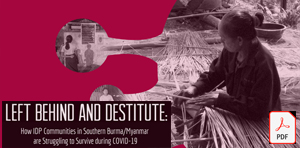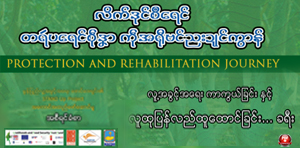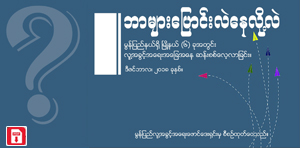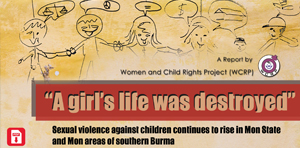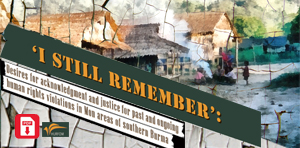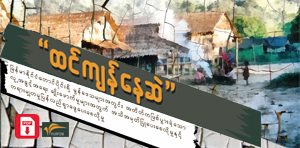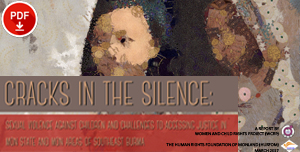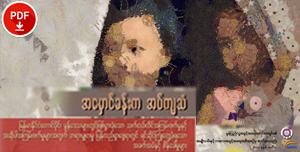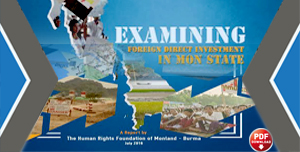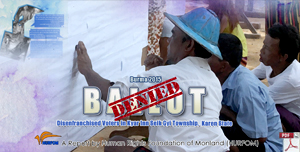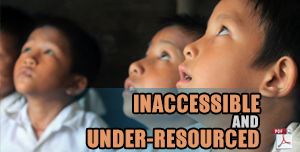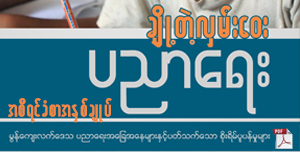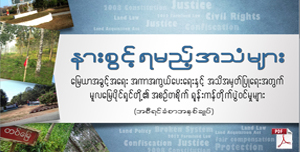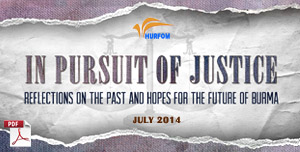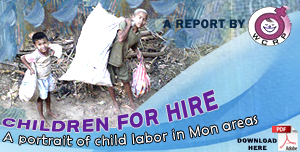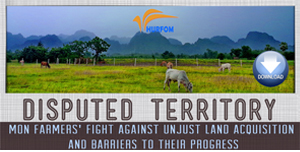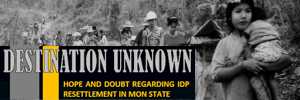Life Under Fire and Fear as the Junta Tightens Its Grip
November 10, 2025
Communities in Mon State, Karen State and Tanintharyi Region continue to face serious insecurity. HURFOM field reporters on the ground are still documenting air attacks, artillery strikes, arrests, extortion and new displacement. All of this is happening at the same time that the Junta is trying to push ahead with its so-called election. For ordinary people, it does not feel like an election period. It feels like a military operation.
In Tanintharyi, the situation was very tense again. On 27 October, junta aircraft bombed Lay Mine Village in Tanintharyi Township while fighting was taking place nearby. Later in the afternoon, a jet returned and fired again and artillery shells fell on the village. One house was hit and burned. This came just days after junta troops in Phar Ni Village destroyed a house and looted around 20 homes. Villagers told our reporters that the soldiers opened every cabinet and took what they wanted. On 22 October, a shell from Light Infantry Battalion 556 landed in the same village and injured seven civilians. By the end of the month, soldiers had come back to the area and many families fled because they did not want to be trapped between fighting forces.
Since 27 October, a junta regiment has also been advancing into Lay Mile Village in Tanintharyi Township. Soldiers burned three houses, launched airstrikes on 28 October and then occupied the village. During this operation, they shot and killed a 30 year old villager. This shows again that whenever the junta moves, civilians are the ones who pay the price.
In Karen State, people in Phalu Village, Myawaddy Township, had to run for safety on 30 October after junta forces launched artillery and an air attack. The junta is trying to regain control along the Myawaddy to Waw Lay road where resistance forces led by the KNLA are very active. Because of that, clashes are happening almost every day and villagers cannot stay in their homes. People are not displaced because of floods or storms. They are displaced because of military offensives.
Mon State is also experiencing growing militarization. Around the MCL Cement Factory near Kadonsi Village in Kyaikmayaw Township, about 200 junta soldiers were deployed on 3 and 5 November. They moved into nearby villages, set up checkpoints on local roads, stopped people, checked vehicles and entered houses they called suspicious. They also fired artillery and used drones toward areas where resistance forces might be hiding. Local people told HURFOM that some families left even before the soldiers arrived because they were afraid of arrests or sudden fighting.
At the same time, the junta is using the election period to control people. In Mawlamyine, a young man named Maung Thet Naing Oo, aged 27, was taken by a passing military patrol on the night of 27 September while he was just chewing betel in front of his house in Taung Wine Ward. The same patrol arrested five other men that night. His family was very worried because he has a mental health condition. After many attempts to get information, his relatives were finally told that he is alive and being held in military custody. This is what many families are going through now. People disappear without charge and the family must go from office to office begging for news.
In Hpa-an, Karen State, two people were arrested and charged for allegedly damaging a campaign billboard of the junta-appointed Chief Minister and USDP candidate, Saw Myint Oo. One of those arrested was only 15 years old. They are now being held at Hpa-an Myoma Police Station under the junta’s election law. This shows that even small acts that show disagreement with the junta are being punished.
Election watchers who spoke with HURFOM said the USDP has already been declared the winner in 28 constituencies across the country because no other parties were allowed or able to register. This includes Yebyu, Thayetchaung and Launglon in Tanintharyi Region. These are areas that are already under airstrikes, heavy surveillance and intimidation. Now the people there are also being denied a political choice. At the same time, the junta-controlled Election Commission has allowed the USDP to field more than 1,000 candidates nationwide. This tells us very clearly that this process is not about the will of the people. It is about power.
Security operations linked to the election have also become stricter. In Thaton District, west of the Thanlwin River, at least 70 young people were arrested in two weeks. Troops and police have moved into areas like Kyaikhto, Bilin, Thaton and Ye, where resistance activity is known. Villages that previously had no military presence are now under watch. People are being stopped, searched and sometimes beaten on suspicion alone. For workers, small traders and farmers, this makes daily movement very difficult.
HURFOM field teams also recorded other abuses this week. At least 15 new cases of extortion took place across Mon, Karen and Tanintharyi. Around 19 families said they were forced to pay to stop their sons from being taken for military service. More than 40 young people were forced into junta military training. More than 10 cases were documented where civilian trucks and cars were taken for military use. In at least 8 to 10 incidents, civilians were used as human shields. At least 43 houses were destroyed by airstrikes, artillery and drone attacks in all targeted areas.
In total for this week, HURFOM documented more than 28 people arrested or missing, 22 detained, 27 injured and 11 killed. New displacement is very high. More than 1,850 people fled in Mon State, more than 3,680 in Karen State and more than 4,100 in Tanintharyi Region during this period.
What we see from these findings is that the junta is trying to rule through fear. On one hand it talks about elections. On the other hand it arrests people, shells villages, blocks roads and forces families to pay bribes or lose their sons. This is not what a genuine political process looks like. This is a military trying to secure control.
HURFOM will continue to document these violations and amplify the voices of the people who are affected. Even when movement is difficult, our field reporters are still gathering testimonies so that the truth from Mon, Karen and Tanintharyi is not silenced.



